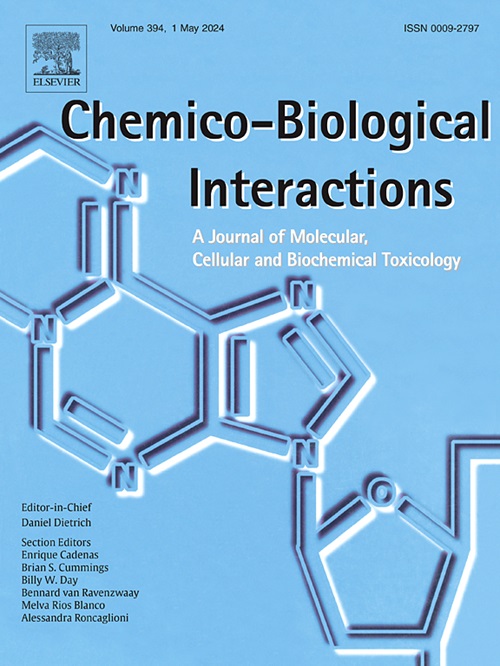D-limonene complexed with hydroxypropyl-β-cyclodextrin prevents impaired cardiac excitation-contraction coupling by reducing oxidative stress and cardiac apoptosis in an animal model of cardiotoxicity induced by doxorubicin
IF 4.7
2区 医学
Q1 BIOCHEMISTRY & MOLECULAR BIOLOGY
引用次数: 0
Abstract
Doxorubicin (Dox) is one of the most used drugs in the treatment of various cancers, but its cardiotoxicity limits its use. The aim of this study was to investigate the cardioprotective effect of the formulation d-limonene-hydroxypropyl-β-cyclodextrin (HβDL) on a murine model of Dox-induced cardiotoxicity. Mice were divided into groups: Control (NaCl 0.9 %), Dox (20 mg/kg), and Dox + HβDL (10 mg/kg). Drugs were administered intraperitoneally once every five days. Heart histological parameters, L-type Ca2+ current (ICa,L), intracellular and mitochondrial reactive species and mitochondrial mass, calcium transient, sarcomeric shortening, redox status (lipoperoxidation, oxidant, and antioxidant enzymes activity), apoptotic and antiapoptotic proteins expression as well NOX-related proteins were evaluated. HβDL prevented heart histological changes, including cellular infiltrate and vacuoles caused by Dox, and also prevented the increases in calcium waves, ICa,L, cytoplasmic and mitochondrial reactive species and mitochondrial mass, expression of Bax, Caspase-3, gp91phox, NOX4 and p22phox, and lipoperaxidation induced by Dox. Moreover, sarcomeric shortening was reduced in the Dox group, but preserved in HβDL treated animals. Glutathione peroxidase activity, which was reduced in Dox group, was also restored in the HβDL group. Our results show the potential cardioprotective effect of HβDL in Dox-induced cardiotoxicity through improved redox status and excitation-contraction coupling and the suppression of apoptotic pathways in cardiomyocytes.
在阿霉素引起的心脏毒性动物模型中,d-柠檬烯与羟丙基-β-环糊精配合可通过减少氧化应激和心脏凋亡来防止心脏兴奋-收缩耦联受损。
阿霉素(Dox)是治疗各种癌症最常用的药物之一,但其心脏毒性限制了其使用。探讨d -柠檬烯-羟丙基-β-环糊精(h -β dl)制剂对小鼠dox致心脏毒性模型的保护作用。小鼠分为对照组(NaCl 0.9%)、Dox (20mg/kg)和Dox+ h - β dl (10mg/kg)。每5天腹腔给药1次。评估心脏组织学参数、L型Ca2+电流(ICa,L)、细胞内和线粒体活性物质和线粒体质量、钙瞬态、肌肉聚合缩短、氧化还原状态(脂质过氧化物、氧化酶和抗氧化酶活性)、凋亡和抗凋亡蛋白表达以及nox相关蛋白。h - β dl可抑制Dox引起的心脏组织组织学改变,包括细胞浸润和空泡,并可抑制Dox引起的钙波、ICa、L、细胞质和线粒体活性物质和线粒体质量增加,Bax、Caspase-3、gp91phox、NOX4和p22phox的表达以及脂质过氧化。此外,Dox组肌肉缩短减少,但在HβDL处理的动物中保持不变。Dox组降低的谷胱甘肽过氧化物酶活性在h - β dl组也得到恢复。我们的研究结果表明,通过改善氧化还原状态和兴奋-收缩耦合以及抑制心肌细胞凋亡途径,h - β dl在dox诱导的心脏毒性中具有潜在的心脏保护作用。
本文章由计算机程序翻译,如有差异,请以英文原文为准。
求助全文
约1分钟内获得全文
求助全文
来源期刊
CiteScore
7.70
自引率
3.90%
发文量
410
审稿时长
36 days
期刊介绍:
Chemico-Biological Interactions publishes research reports and review articles that examine the molecular, cellular, and/or biochemical basis of toxicologically relevant outcomes. Special emphasis is placed on toxicological mechanisms associated with interactions between chemicals and biological systems. Outcomes may include all traditional endpoints caused by synthetic or naturally occurring chemicals, both in vivo and in vitro. Endpoints of interest include, but are not limited to carcinogenesis, mutagenesis, respiratory toxicology, neurotoxicology, reproductive and developmental toxicology, and immunotoxicology.

 求助内容:
求助内容: 应助结果提醒方式:
应助结果提醒方式:


